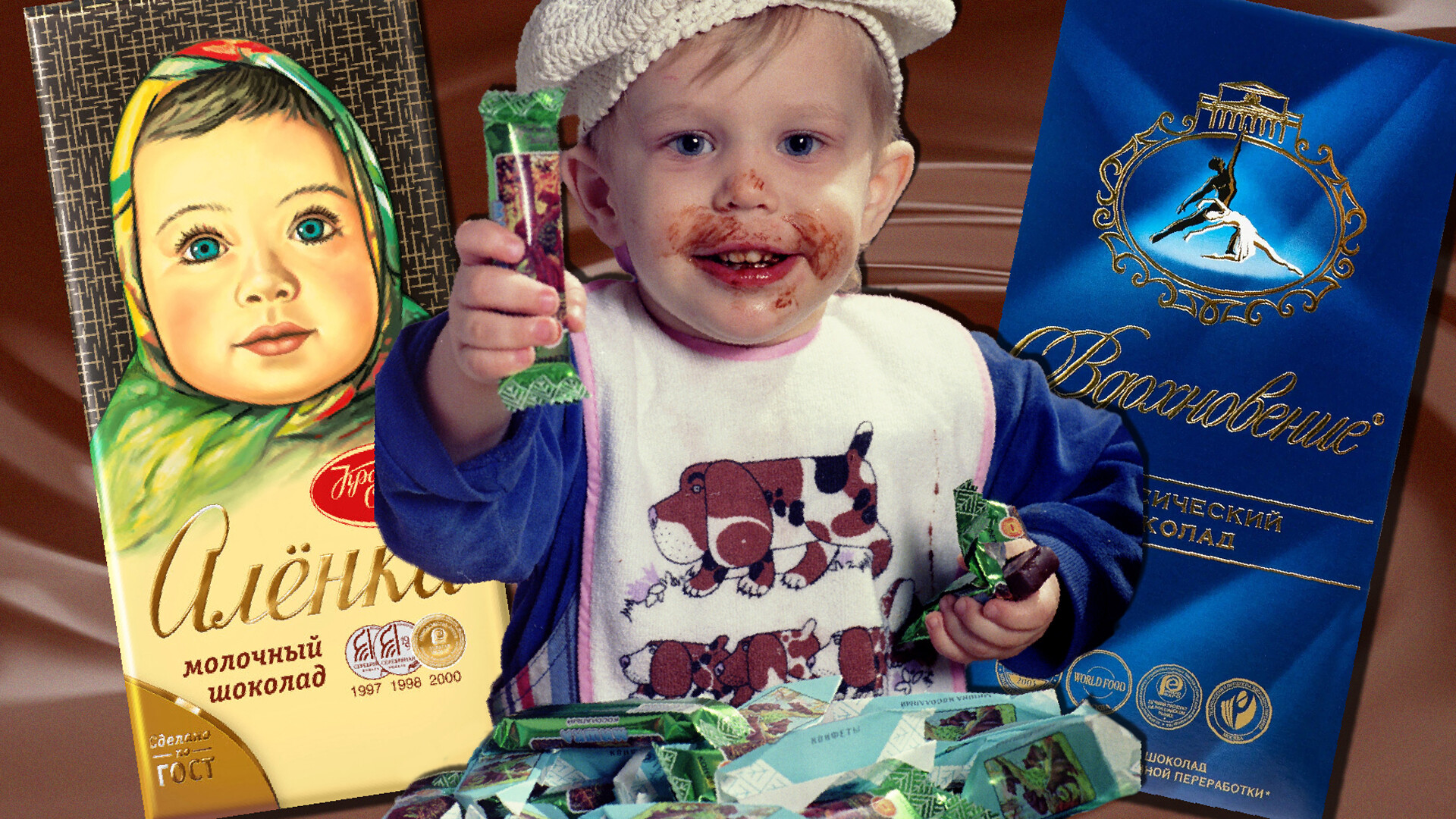
Many Russians’ favorite chocolates today were invented in the Soviet years and even earlier. ‘Alenka’, ‘Vdokhnovenie’ (‘Inspiration’), ‘Stratosphere’, ‘Krasnaya Shapochka’ (‘Red Riding Hood’), ‘Mishka Na Severe’ (‘A bear in the North’) - these and many other chocolates cause a bout of nostalgia in Russians who were still born in the USSR. So, why does chocolate from Soviet childhood seem tastier than today?

Abrikosov confectionery factory, end of the XIXth century.
Evgeny Leonov/SputnikChocolate came to Russia from Europe in the 18th century and was instantly popular.
By the beginning of the 20th century, there were already hundreds of chocolate factories in Russia. The most famous were ‘Partnership of A. I. Abrikosov's sons’, ‘Einem's Factory’, ‘Trading House Siou fils & C’ (read more about the history of chocolate in Russia here).
Chocolate was, however, very expensive and unaffordable for most people.
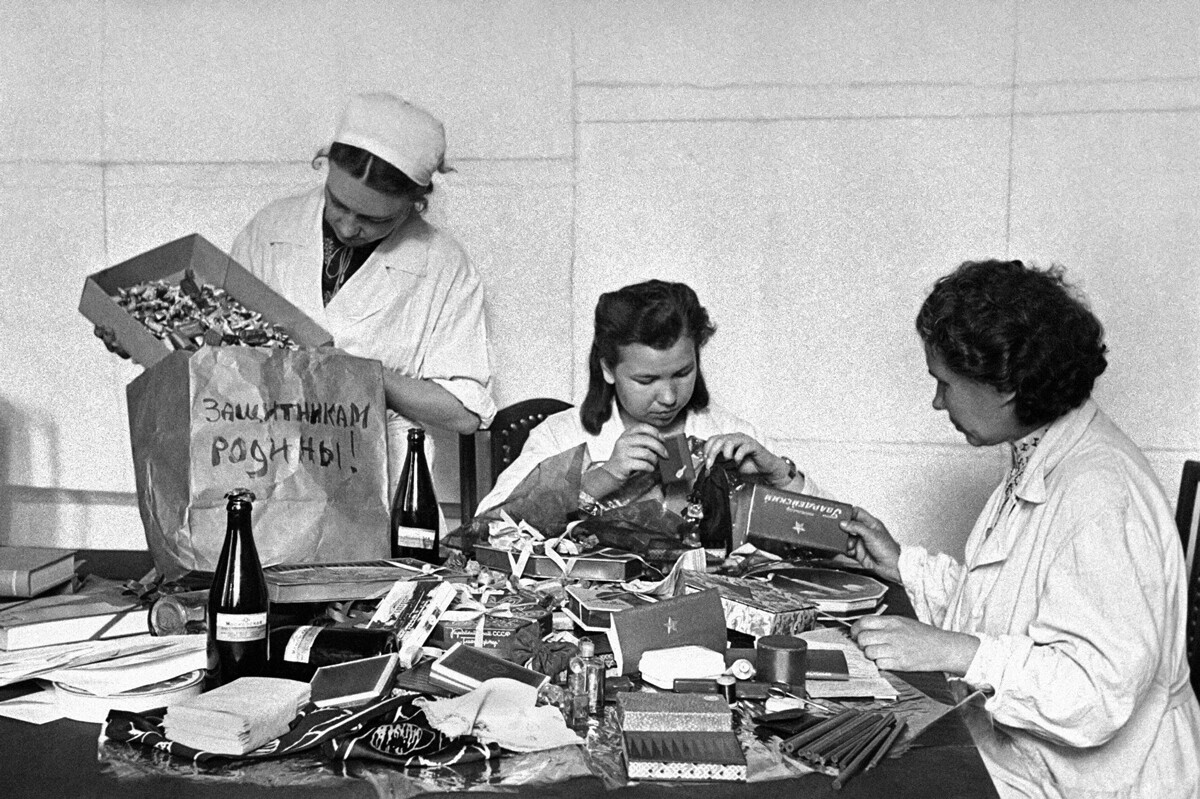
Workers of the Krasny Oktyabr confectionery factory preparing gifts for Red Army soldiers. Moscow, 1941.
Anatoly Garanin/SputnikAfter the 1917 Bolshevik Revolution and Civil War (1918-1923), chocolate manufactures were nationalized and were issued new names, which are still known today. ‘Babaevsky’, ‘Krasny Oktyabr’, ‘Bolshevik’, ‘Rot Front’ and others, to name a few.
During World War II, confectionery factories located close to the front were evacuated to the rear: Penza, Novosibirsk, Samara (then Kuybyshev) and many other cities and regions of the country. Chocolate bars, along with other products, were then sent to soldiers at the front.
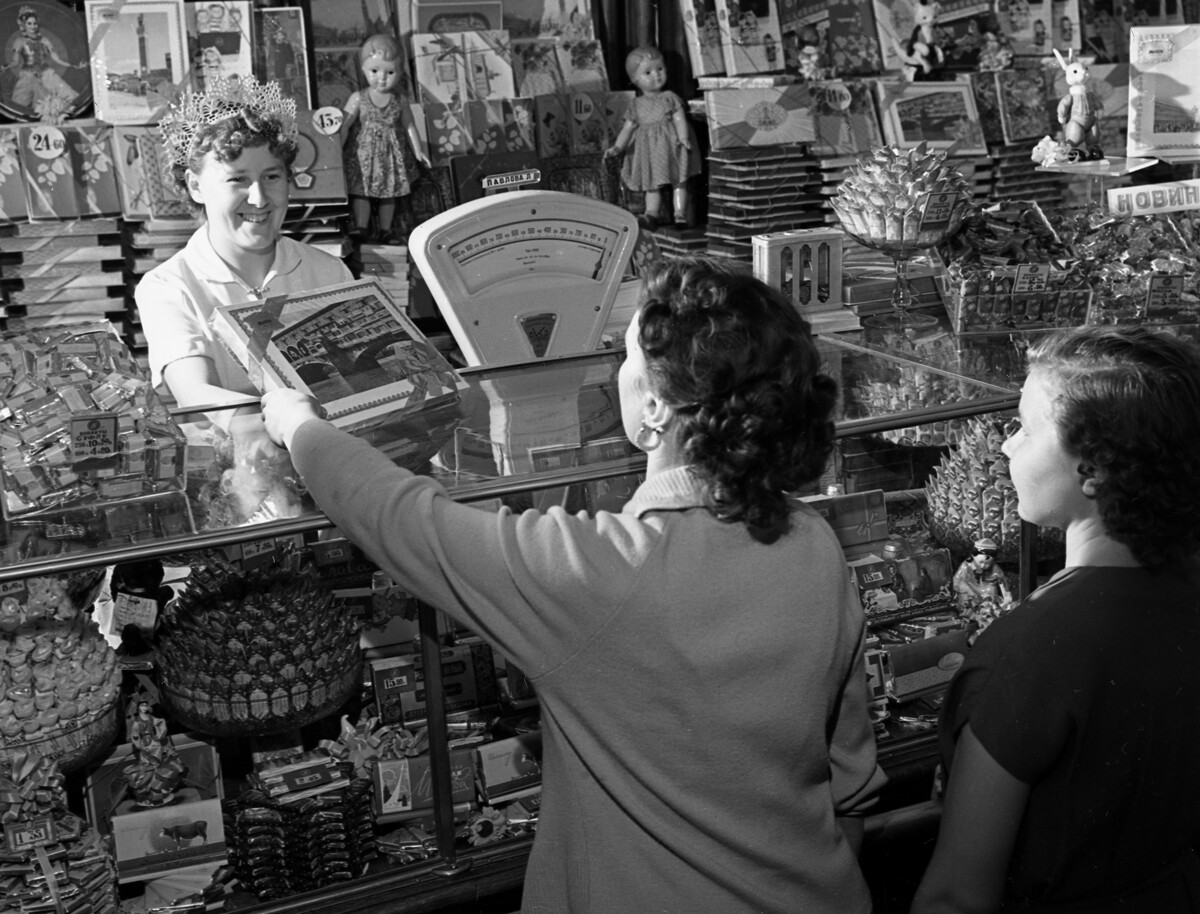
Confectionery shop in Moscow, 1960.
A. Vorotynsky/SputnikThe real rise of the chocolate industry only began after the war. Production grew in the USSR with each passing year. In 1913, imports of cocoa beans into the Russian Empire amounted to just over 5,000 tons (equal to about 30 grams for every person in the country!), in 1938 - almost 15,000 tons (about 90 grams per person), by 1987 - 148,000 tons (which was more than 500 grams per person!).
Soviet chocolate was eventually even exported abroad. In the 1970s and 1980s, the figures equaled about 4,600 tons of confectionery.
People who grew up in the USSR remember the taste of THAT chocolate. Although there was a shortage of many goods, you could get chocolate at any time, and it was relatively cheap. Of course, before holidays like New Year's Eve and March 8 (Int’l Women’s Day), the most popular chocolate sets were swept off the shelves.
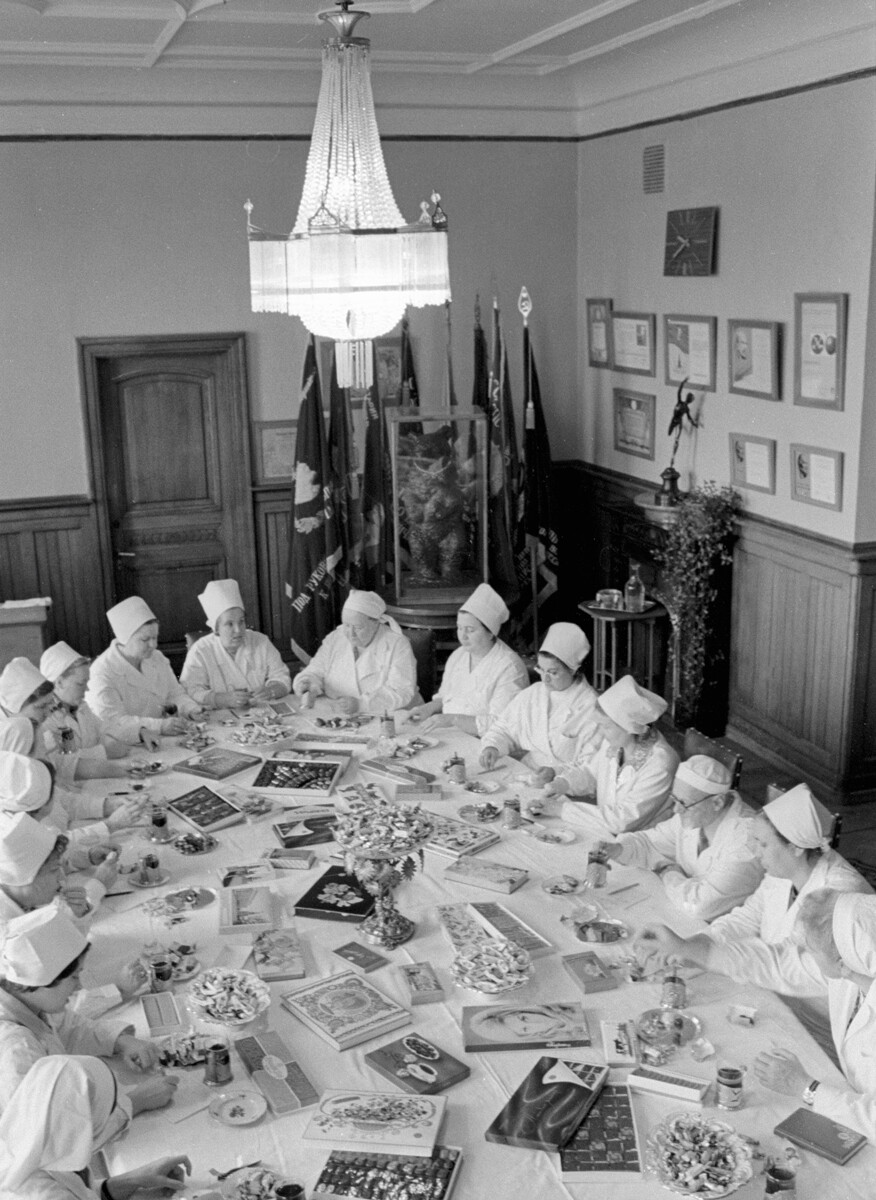
Members of the tasting council of the Krasny Oktyabr confectionery factory are testing new products, 1978.
Vladimir Rodionov/SputnikThe rest of the time, practically every grocery store had local chocolates made according to the State Standard (GOST), using only natural ingredients. There was no competition between factories and they all produced according to state guidelines. Yes, there were industry awards and prizes, but there was no need to cheat with the structure or weight of the goods. Chocolates were the same in Moscow as in Khabarovsk.
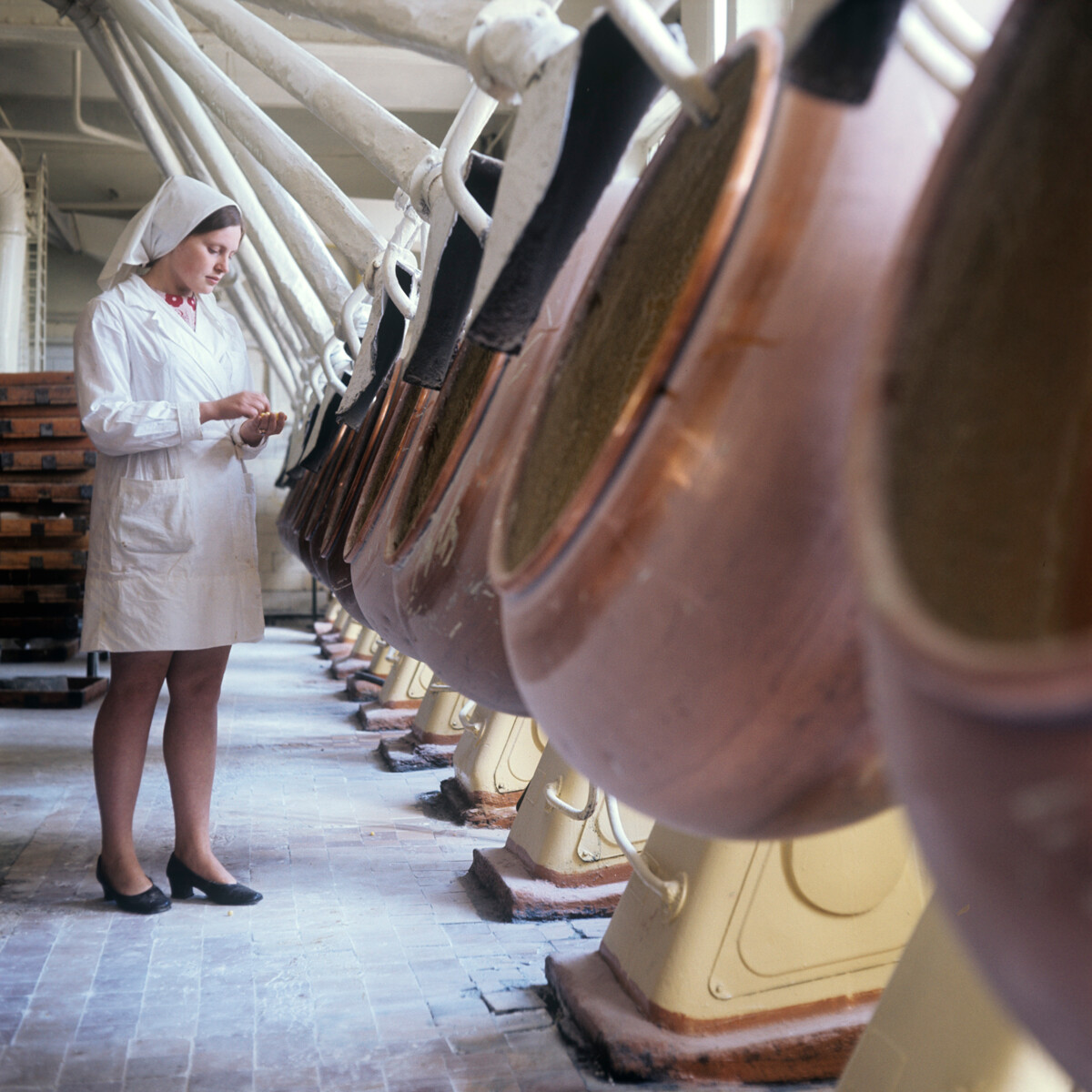
Moscow confectionery factory "Rot-Front", 1979.
Rudolf Alfimov/SputnikPalm oil was first imported to the USSR in 1961 as an experiment. But, it was only in the late 1970s and early 1980s that it began to be used systematically in the food industry. However, its quantity was also regulated by GOST.

Production of the Moscow confectionery plant "Rot Front", 1977.
Rudolf Alfimov/SputnikAt the same time, the cocoa beans were of high quality. They were imported from African countries, in return for which the Soviet Union built factories and hydraulic structures.
Perhaps there was no one in the Soviet Union who did not know the taste of ‘Alenka’ chocolate. You know, the one with the girl in a scarf on the wrapper. The first Soviet milk chocolate was released in 1965 and was beloved by the whole country, due to its delicate flavor and affordable price (read more here).
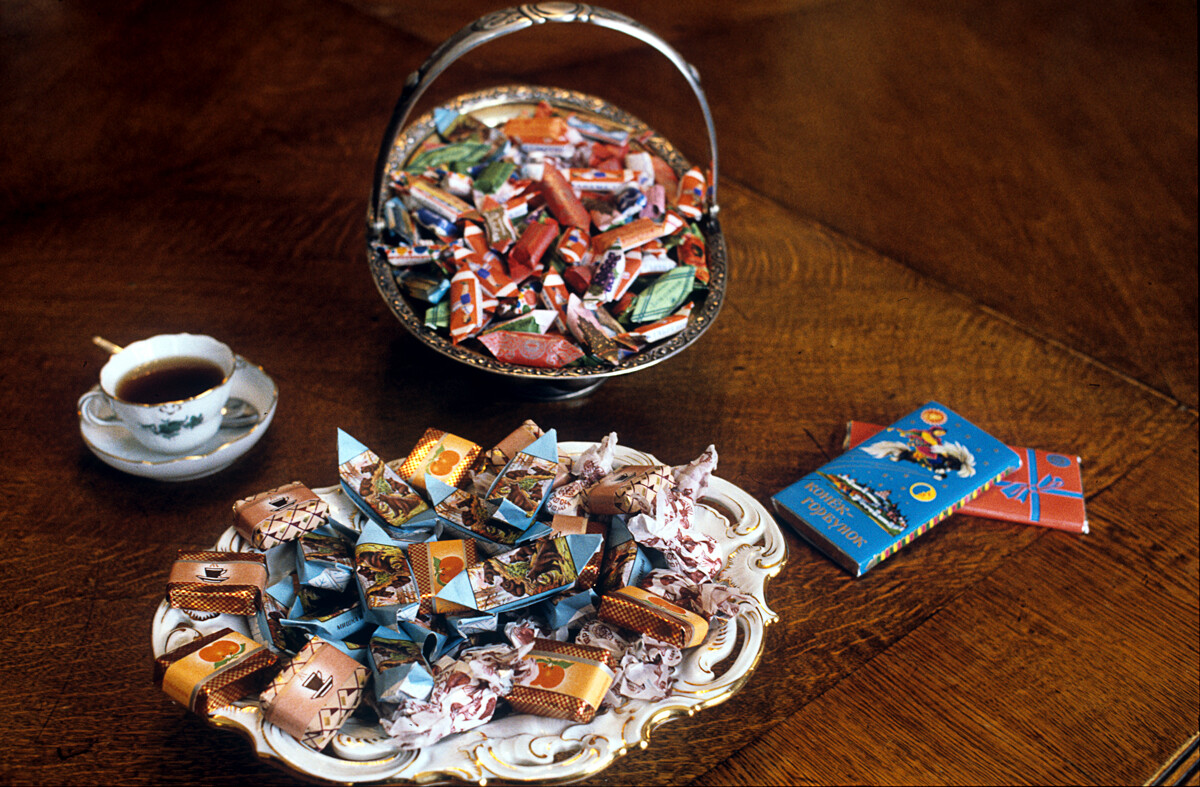
Chocolate sweets of the factory "Red October", 1986.
Fred Grinberg/Sputnik‘Vdokhovlenie’ chocolate with the Bolshoi Theater depicted on the package appeared in 1967. It was the country's first portioned chocolate, with each piece wrapped in a separate foil.
The most popular and coveted were the ‘Mishka Na Severe’ chocolates (they began being produced in 1939 in Leningrad [now St. Petersburg]), ‘Krasnaya Shapochka’, which were walnut praline filled and chocolate-coated wafers (produced since 1955 at the ‘Krasny Oktyabr’ factory), ‘Stratosphere’ and ‘Soufflé’ (produced since 1936).

Chocolate made in "Babaevsky" factory/
Andrei Solomonov/SputnikIn the 1970s, large chocolate bars called ‘Gulliver’ appeared on store shelves - the size of a few ordinary ones. They, too, had a waffle filling. As a rule, parents gave their children such chocolates for holidays.
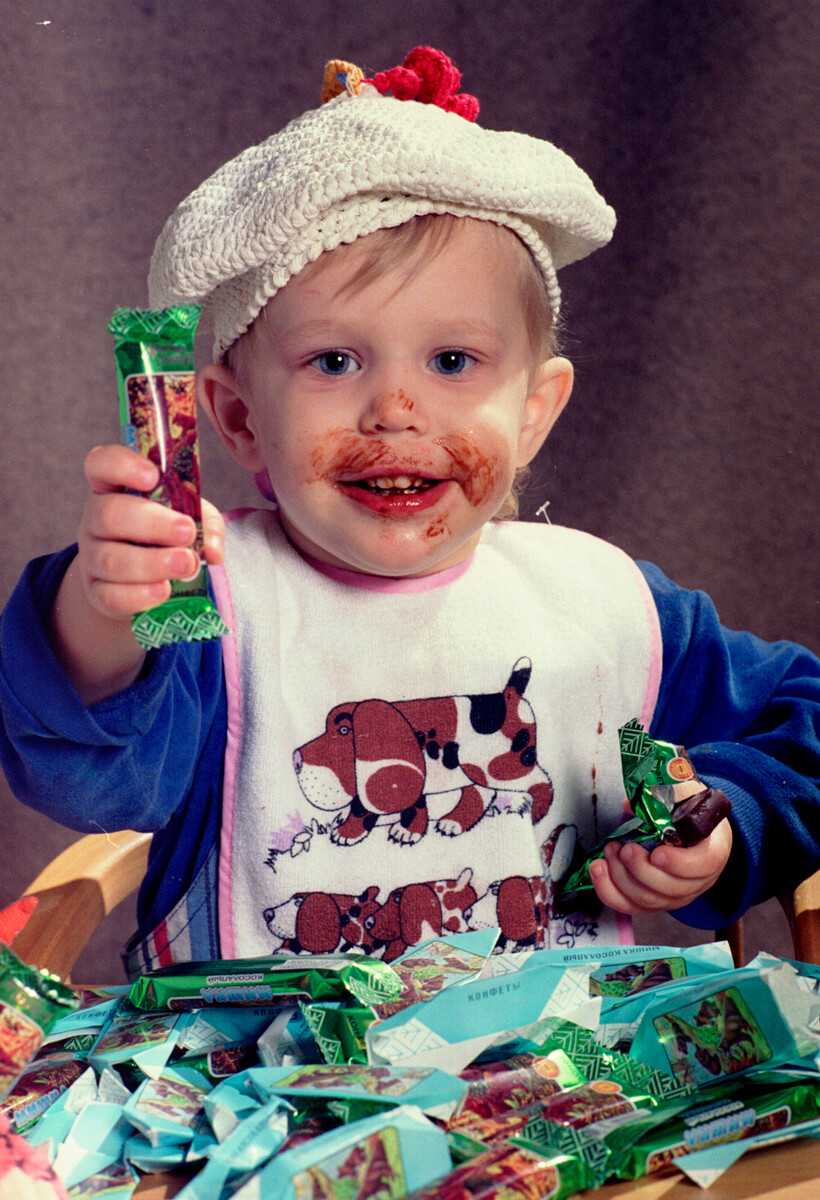
New line for the production of sweets "Bear clubfoot", 1995.
Gennady Khamelyanin/TASSAdditionally, the Soviet Union also produced pre-revolutionary chocolate. The most famous were ‘Mishka Kosolapy’ (‘Stubby Bear’), ‘Citron’ and ‘Nu-ka, otnimi’ (‘Try to take it away’). They can still be found in any Russian store.
Dear readers,
Our website and social media accounts are under threat of being restricted or banned, due to the current circumstances. So, to keep up with our latest content, simply do the following:
If using any of Russia Beyond's content, partly or in full, always provide an active hyperlink to the original material.
Subscribe
to our newsletter!
Get the week's best stories straight to your inbox